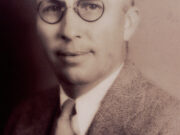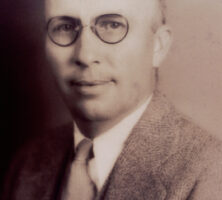William C. Pauley was the first professionally trained landscape architect to establish a permanent practice in Atlanta. He worked to achieve the registration of landscape architects in Georgia and, following the adoption of professional registration, was granted the first state license to practice landscape architecture. Pauley’s career included designing the campuses and grounds for more than 100 schools and colleges in the Southeast, 35 hospitals, and 18 cemeteries. He was also involved to varying degrees in the planning for 50 parks in Georgia.
William Crooks Pauley was born in Lafayette, Indiana, on July 6, 1893. He earned a Bachelor of Science degree in 1916 from Purdue University in Indiana, and a Master of Landscape Architecture degree in 1918 from Massachusetts Agricultural College (later University of Massachusetts at Amherst). Pauley and his wife, Frances, had two daughters, Mary and Joan. Frances Pauley became a well-known social activist and political organizer in Atlanta.

Courtesy of Spencer Tunnell
In 1919 Pauley moved to Atlanta. Early in his career, he designed a number of significant private estates and residences in Georgia. Perhaps his most important design is the Gardens at Bankshaven in Newnan, which was built during the 1920s and 1930s in collaboration with the historian William Banks’s father. Another important project was Hurt Park, built as a memorial to the Atlanta builder, financier, and philanthropist Joel Hurt. The Atlanta park is located between Central Avenue and Courtland Street, with the Hurt Building in sight. Pauley’s notable projects outside Georgia include his design for the Lake Eola fountain in Orlando, Florida, which forms the centerpiece for Orlando’s downtown park, and the grounds for the Grand Hotel in Point Clear, Alabama.
Pauley was active in Atlanta civic affairs, including the preservation of Fernbank Forest in the Druid Hills neighborhood. He was a member and fellow of the American Society of Landscape Architects. He died in 1985.






